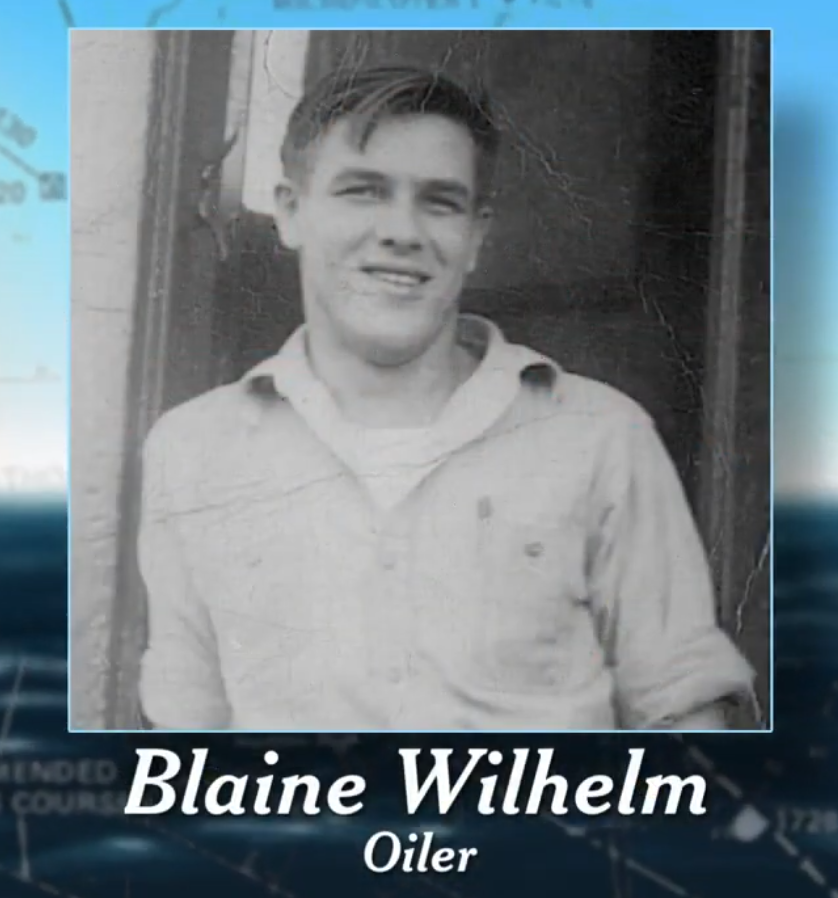This story was originally published on 11/10/22
The crew left port at Superior, Wisconsin, at 2:30 p.m. on Nov. 9, 1975, and was later joined by the S.S. Arthur M. Anderson departing from Two Harbors, Minnesota.
The vessels remained in radio contact, and the captains – Capt. Ernest McSorley of the Fitzgerald and Capt. Bernie Cooper of the Anderson – knew about the approaching low-pressure system that would bring the November gales.
The two captains planned to voyage north between Isle Royale and the Keweenaw Peninsula, then track southeast to seek shelter in Whitefish Point.
But on the afternoon of Nov. 10, the conditions worsened as the storm centered over Marquette. The Fitzgerald was approaching Caribou Island after passing Michipicoten Island, a little over 50 miles northwest of Whitefish Point.
Each ship was battered by waves over 25 feet, but it was the Fitzgerald that would meet its demise.
As the storm intensified, the two ships struggled to remain in contact.

At 7:10 p.m. on Nov. 10, the first mate of the Anderson, Morgan Clark, heard from the Fitzgerald for the last time. Capt. McSorley had said they were holding their own. But at 7:15 p.m., the location signal on the radar for the Fitzgerald disappeared and never reappeared.
RELATED: Gordon Lightfoot Left Lasting Legacy on Great Lakes Shipwreck Culture
Clark tried to call the Fitzgerald again at 7:22 p.m. but did not receive an answer.
The wreckage of the Edmund Fitzgerald was found on Nov. 15, 1975, using sonar and magnetic anomaly detection. In May 1976, a camera was sent down 535 feet below the surface, and it was clear from the writing on the stern that it was the Edmund Fitzgerald.
Now, every year, the Great Lakes Shipwreck Museum hosts a memorial to honor and remember the journey and the crew. You can find more about the memorial and the Edmund Fitzgerald here.
Forecasting the gales
Here’s how the weather played out the day before and on that fateful day:
7 a.m. on Nov. 9, 1975
Just hours before departing, the winds were calm and the air was cool. Duluth, Minnesota, had surface observations of 28° and SE winds at 5 mph.
As the low-pressure system developed, the SSE winds on the eastern side of the low would warm temperatures into the mid to upper 50s. Some would even reach the low 60s.
By 7 p.m., the low-pressure had developed quickly and moved northeast, closer to the Great Lakes.
At this time, gale warnings had been issued for Lake Superior, meaning winds were beginning to blow 34 to 47 knots (~39 to 54 mph). Rough seas were ahead.

7 a.m. Nov. 10, 1975:
The storm system intensified overnight, leading the gale warnings to be upgraded to storm warnings earlier in the morning. Winds were blowing 43 to 63 knots (~49 to 72 mph).
The center of the low was situated over Marquette, with a central pressure of 984 mb. Ahead of the low-pressure center, temperatures remained in the 50s. Sault Ste Marie observed 56° at 7 a.m. Winds were sustained at 25 mph from the SE. Gusts were likely higher.
(Strong winds over land indicate even stronger winds over Lake Superior. That’s due to less friction on the water’s surface.)
Northwest of the low, temperatures had dropped into the 30s and 40s, and locations including central Lake Superior were observing rain and snow.
The Fitzgerald and the Anderson would be located in this area as they approached Michipicoten Island.
3:30 p.m.
McSorley and Cooper remained in radio contact, as the lake continued to toss the ships in the large waves. At this time, Cooper observed snow and found it difficult to keep a visual on the Fitzgerald.
Sea spray and snow were interfering with the navigation radar on the Anderson, making it even more difficult to track the Fitzgerald as it tossed in the waves. The report of snow and visibility issues from Captain Cooper indicated air temperatures had now dropped into the 30s at the eastern portion of the lake, as the storm continued northeast over Lake Superior.
5:20 p.m.
Winds observed by the Anderson were from the northwest at 58 knots (~66 mph) with gusts up to 70 knots (~80 mph). Waves were estimated at 18 to 25 feet, with peak waves likely over 30 feet.
7:10 p.m.
First Mate of the Anderson, Morgan Clark contacted the Fitzgerald. The winds and waves were strong enough to block the Fitzgerald’s location on the radar. This is the last time anyone on board the Anderson hears from the Fitzgerald.
9 p.m.
Winds in Whitefish Bay have calmed to 40 to 45 mph, reported by Captain Cooper. In the safety of Whitefish bay, Cooper contacted the Coast Guard to express his concern for the Fitzgerald.
In the following days, crews would search for the Fitzgerald, finding it less than 20 miles away from its destination of Whitefish Point.


